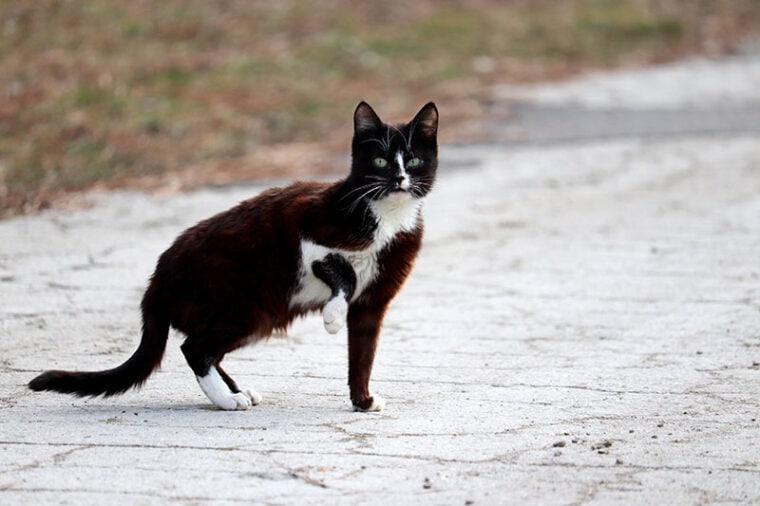
Cats are curious animals that enjoy running, jumping, and pouncing. While they mostly come out unscathed, sometimes all that play can lead to injuries with a telltale limp.
While limping is a sign of pain or discomfort and should never be ignored, the possible causes can vary significantly. Here are the 12 reasons your cat may be limping, and signs you need to call a vet.
The 12 Reasons Your Cat Might Be Limping
1. Broken Bone
A cat limping on one leg can indicate a broken bone in the leg, wrist, or paw. Severe fractures may have obvious signs, like a bone protruding through the skin or a deformity, but not always. It can be difficult to distinguish between a broken bone and another type of injury.
If you notice any of these signs, contact your vet or visit your local emergency clinic as soon as possible. Don’t give your cat any human pain medication, as most are toxic for cats.
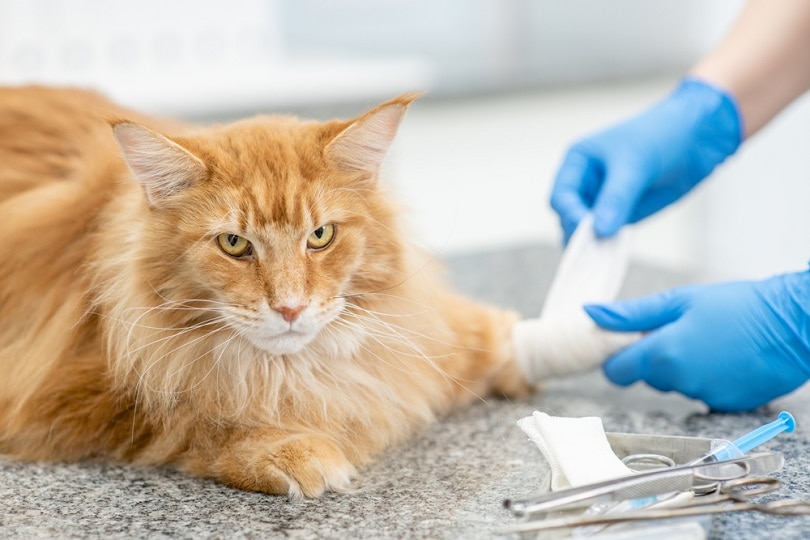
2. Dislocated Joint
Joints are held together by tendons and ligaments that can become damaged, leading to dislocation. Cats are prone to dislocations of the hip and kneecap, as well as the elbows and tail. Typically, this occurs with trauma and warrants an urgent vet visit. The common causes of joint dislocation include falling from a height, getting hit by a car, or congenital disorders.
3. Embedded Foreign Body
Walking around inside or outside can cause foreign bodies to become embedded in your cat’s paw or leg, including grass seeds, thorns, splinters, or shards of glass. In some cases, the foreign body may be visible, but other signs include limping, redness and inflammation, or excessive licking or chewing of the paws. This warrants a vet visit in most cases, as your cat may need pain medication, antibiotics, or surgical removal.

4. Injured Toenail
Though it may seem small, an injured toenail can be a source of excruciating pain for your cat. Even a tiny tear in the nail on one toe can be intense enough to cause a limp and inactivity. This can be caused by many things, including catching the nail on something or landing wrong on a jump. Aside from obvious signs like the nail itself and bleeding, your cat may limp, and they might chew, lick, or bite at the affected paw.
5. Wound
The pads on your cat’s paws—and the space between them—are their connection to the ground. They’re thick and cushioned for traction, shock absorption, comfort, and weather protection, but they can be torn, punctured, or burned, leading to wounds. Because cats walk on their paws all the time, wounds can take longer to heal and can become infected.
If your cat has a wound on their paw, you can apply first aid at home and contact your vet. Serious wounds that are large or bleed excessively may require an emergency clinic for treatment.
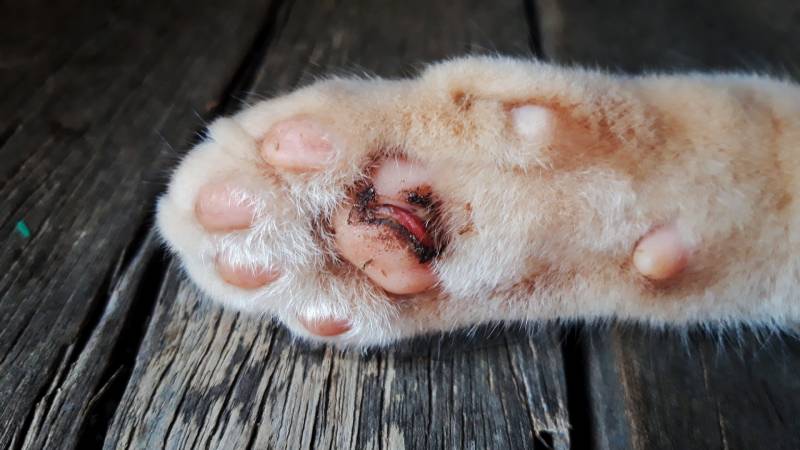
6. Insect Bite or Sting
Cats are nosy and prone to bites and stings from bees, wasps, scorpions, or other insects. Depending on the insect, cats may have anything from mild irritation to life-threatening shock that requires a vet.
If you notice serious signs like severe swelling, hives, difficulty breathing or wheezing, excessive drooling, agitation, vomiting or diarrhea, dizziness or disorientation, or seizures, contact an emergency vet immediately.
7. Muscle or Nerve Injury
Cats can experience muscle strain or tears from trauma or injury, such as overstretching or getting hit by a car. Muscle injuries can result in limping, and your cat might hide itself away. Though some muscle injuries will heal in time without significant intervention, you should contact your vet for an exam, pain control, or other therapies.
If your cat sustains damage to the nerve supply to the front leg, this can result in a mild to severe lameness to one or both limbs. In severe cases, they can be completely paralyzed in the affected limb/s.

8. Infection
Cats can get infections in the skin, muscle, or bone, causing different degrees of pain. This may be caused by trauma, penetration by a foreign object, cuts and more. One of the most common sources of infection is from fighting with another cat. Depending on the type of infection and what it affects, the treatment can range from antibiotics to hospitalization.
9. Arthritis
Arthritis is a condition that causes inflammation and deterioration of one or more joints. This is more likely in senior cats, though it can affect younger cats. The causes include age, obesity, abnormal joint development, body conformation, past injuries, and poor nutrition.
Depending on the extent of arthritis and its cause, the treatment can range from prescription diets, pain medication, even surgery. One of the hallmarks of arthritis is that it is usually worst after resting, and improves as they start moving.
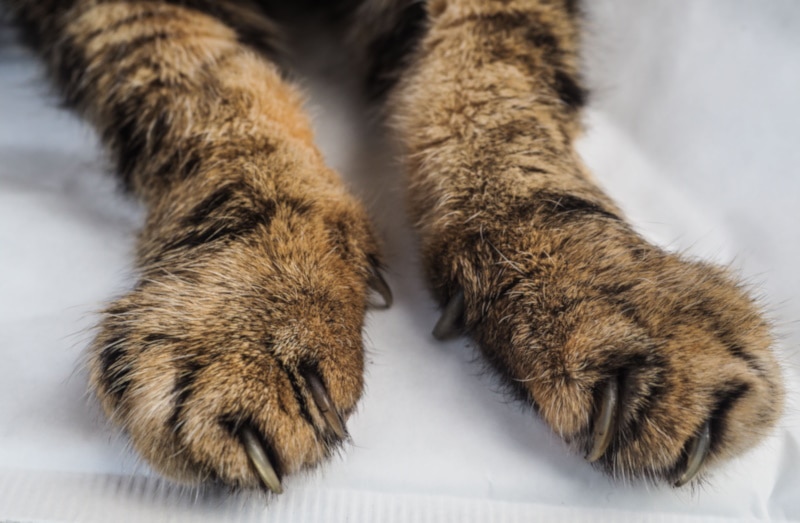
9. Deformity
A limb deformity can be developmental (during growth) or congenital (present from birth). This often occurs in the front legs and may take the shape of crooked or irregular limbs. Some cats can live with deformities just fine, while others may limp and struggle with pain and limited mobility. Limb deformities may be obvious or subtle, which may come up during a routine exam. Depending on the severity of the deformity, your vet may recommend pain control, surgery, treatment for an underlying condition, or changes to your cat’s environment to make them safer and more comfortable.
11. Cancer
Cats can have cancer of the bone, soft tissue, or joints that can cause a limp. Osteosarcoma, a malignant cancer of the bone that often affects the leg, can cause severe pain and limping, especially as it progresses. There are other types of cancer that can cause a limp, however, so it’s important to make an appointment with your vet for an exam.
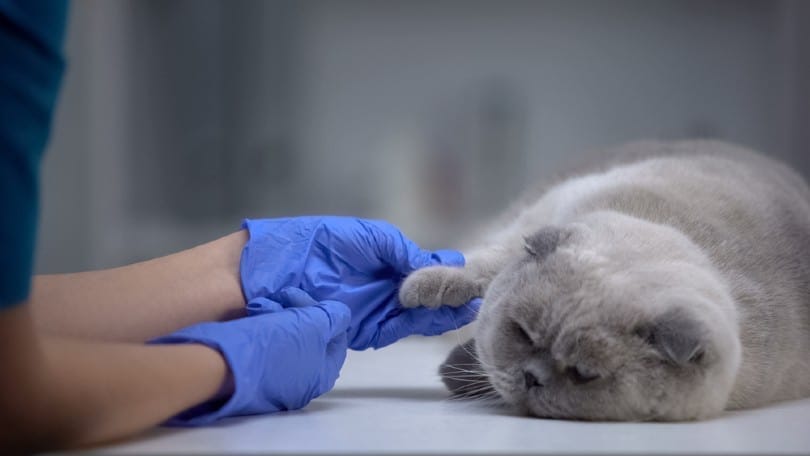
12. Disease
Several diseases can cause a limp in cats, including cardiovascular diseases like hypertrophic cardiomyopathy. This disease thickens the heart muscle and results in blood clots forming which can affect the blood supply to the limbs, leading to lameness and pain. The foot of the affected limb is often cold to touch. Neurological conditions can also cause a limp. If your cat is limping without any injuries, your vet can consider possible disease causes.
When Should I Call a Vet for My Cat’s Limp?
There are many reasons a cat may limp, some of which may improve on their own. If your cat just started limping, or it comes and goes, you can probably take a “wait and see” approach. This is also true if your cat can bear weight on the leg and doesn’t have any other signs of distress or pain.
If your cat’s limp doesn’t improve after a few days, however, make an appointment with your vet.
In any event, if your cat is limping and you are in any doubt of what to do, call your vet for advice.
Conclusion
If your cat is limping, there could be numerous causes, the majority of which should be addressed by your veterinarian. If you have any concerns about your cat’s limp, or see other signs of distress, make sure to schedule an appointment or visit an emergency clinic as soon as possible.
Featured Image Credit: Oleg Elkov, Shutterstock








